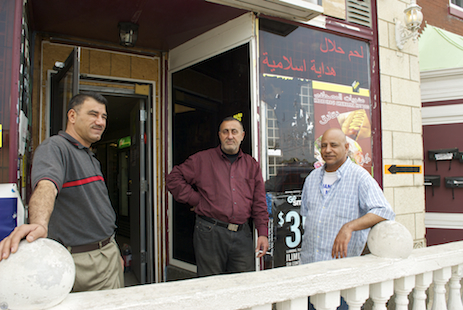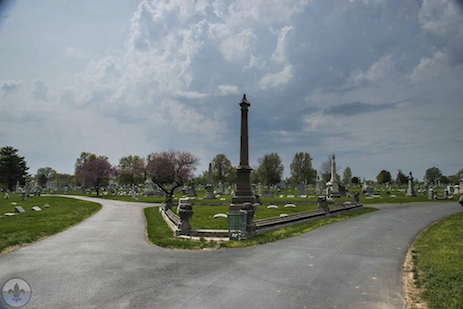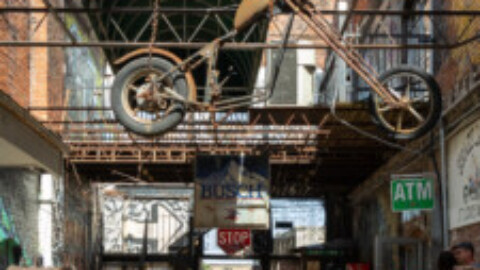photograph by Jason Gray
Bevo Mill is a south St. Louis neighborhood punctuated by the independent character of its many waves of inhabitants. Nearby where they intersect, a thriving commercial and dining district exists along the neighborhood’s main thoroughfares of Delor, Morganford and Gravois. Here, the health of the area is less related to gentrification than it is to a shear sense of pride and community (a welcome trait that generations of immigrants have imprinted on Bevo Mill).
photograph by Jason Gray
photograph by Kara Schoen
photograph by Amanda Miller
photograph by Bandula Guruge
photograph by Jason Gray
Following an interuption caused by the Civil War (who wants to move to a country at war with itself?), the trend of German immigration to St. Louis resumed. By this time, the neighborhoods directly north and south of Downtown were swollen to capacity, and so newly arrived people began to live further west, southwest and northwest. It is during this phase of St. Louis’ history that the Bevo Mill neighborhood, originally part of the massive Oak Hill tract, started to develop.
This original German population built much of its infrastructure around Gravois, which was an important trade route between St. Louis city and the Missouri hinterland. After 1900, Bevo Mill began to subdivide, and residential areas gained some of their current character; the period between World War II and the Great Depression was an era of substantial growth for the neighborhood, and remains as its most productive time. As the neighborhood came into form, towering Catholic and Lutheran churches were constructed, two expansive cemeteries were added, several Ittner/Milligan public schools were erected, and industrial sites took shape. During this time, the city was growing rapidly, and so was Bevo Mill. Still, a German character pervaded, and was culminated in the neighborhood’s most unique feature, the Bevo Mill.
photograph by Kara Schoen
photograph by Chris Naffziger
photograph by Jason Gray
photograph by Dan Henrichs Photography, St. Louis
In 1915, constuction began on the Bevo Mill, a reproduction wind mill based on traditional Dutch models. August A. Busch, Sr. financed the project, which was meant to become an entertaining space and private dining hall for the use of the Busch family, and later opened as a public restaurant. Popular wisdom is that the beer baron selected the site at Morganford, Delor and Gravois because it was half-way between his residence at Grant’s Farm and his work, Anheuser-Busch Brewery. No doubt, it is closer to the Brewery in Soulard, but there is some truth to the story. In 1914, Gravois became the first paved concrete highway in Missouri, and this probably had a lot of impact on where Busch decided to locate an establishment which he planned to frequent on his journeys home from work. Nonetheless, Bevo Mill is a beloved city landmark (designated in 1971), and the quietly propelled, rotating blades of the Mill can be seen reflected in windows and over the rooftops of buildings throughout the neighborhood. Additional interesting facts about the history of the Bevo Mill can be found here.
photograph by Dan Henrichs Photography, St. Louis
photograph by Amanda Miller
photograph by Janet Henrichs
photograph by Jason Gray
photograph by Ann Aurbach
Over the course of the 20th century, Bevo Mill’s population became gradually more integrated, but remained largely eastern European, in terms of ethnicity. From 1960-1990, the neighborhood lost a substantial number of residents much like the rest of St. Louis.
In 1992, the breakup of Yugoslavia led to the Bosnian War; a tragic conflict that left many dead and over 2 million people displaced. The pattern of violence included aspects of rape, torture, and ethnic cleansing. The early nineteen-nineties also saw the first waves of Bosnian and Croatian refugees to the United States. Around this time, the State Department selected St. Louis as the primary destination for persons coming from this European region to relocate; a decision factored by the unique mixture of low-income housing, available entry-level jobs, and general welcomeness that St. Louis offered. Today, the city has the highest per capita Bosnian population outside of Bosnia, and many of them live in Bevo Mill. A great chronicle of this transition is available in the excellent book, After the Fall: Srebrenica Survivors in St. Louis, by Patrick Mccarthy & Tom Maday.
The effect of this new wave of immigration has been huge and overly positive. With so many sudden, new inhabitants, the neighborhood began to establish its identity all over again. Bosnian and Croatian bakeries, cafes, shops, nightclubs, newspapers, and more transitioned Bevo Mill from feeling vaguely Bavarian into a sort of “little Sarajevo”. Islamic places of worship opened, as did an Islamic community center. While the rest of St. Louis continued its downward population/economic trend, Bevo Mill was now revitalized. Today, this character remains intact, and the neighborhood is a friendly, family-centered area with substanial cultural opportunities that are not found anywhere else in the Midwest.
photograph by Ann Aurbach
photograph by Anne Warfield
photograph by Dan Henrichs Photography, St. Louis
photograph by Jason Gray
photograph by Bandula Gurunge
Our endpoint for Photo Flood 21 was the eponymous Bevo Mill. Though on the expensive side, the Sunday brunch is both well-known and entirely worth it. A huge bonus (aside from the amazing interior dining area) is the unlimited Bloody Mary Bar!
photograph by Jason Gray





























[…] (Art Hill, Ead’s Bridge, the Levee) or else inherited from earlier generations (Fox Theatre, Bevo Mill, Civil Courts Building); these are places that few people (if any) alive today remember the origins […]